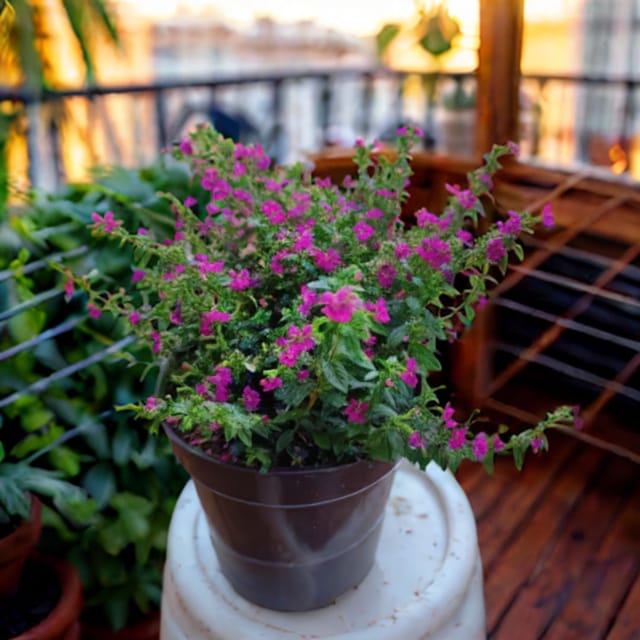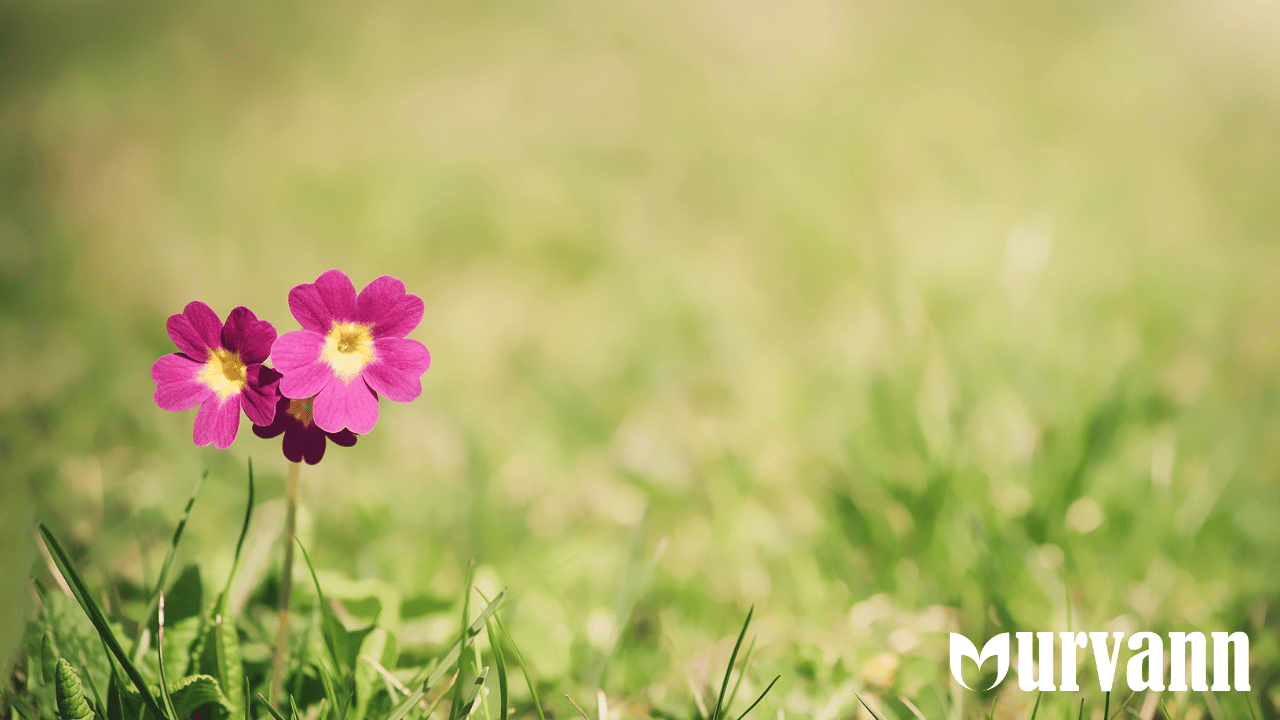Have you ever planted “cigar plants?” They are one of my favorite categories of plants to grow as annuals, self sowers, and perennials.
Though many of these flowers bloom all summer long, October is when they truly come to life. Maybe it is the sunlight or the number of blossoms, but for the fall appeal, Cuphea is a must grow!
Another amazing aspect of Cuphea is that there are a lot of species to choose from! There are roughly 260 species within the genus Cuphea, which are members of the Lythraceae plant family. This group also contains crape myrtles and pomegranates! So read on and know all about how to grow and care for these amazing flowers.
Types of Cuphea
Although Cuphea hyssopifolia, also known as fake heather, is the most famous species of Cuphea plant, other well-known variations include Cuphea ignea, well known as cigar plant or firecracker plant, and Cuphea llavea, commonly known as bat-faced cuphea. These flowers with such strange names tend to be just as rare. Read on to learn about some of the most popular Cuphea cultivars as well as guidelines on how to cultivate and care for these bee-friendly plants.
Cuphea Ignia (Cigar plant)
Also known as the cigar plant or firecracker plant, C. ignea has brilliant red, tubular blooms that resemble smouldering cigars. While this species is truly a perennial shrub, its susceptibility to cold means that, in northern mountain regions, it grows largely as an annual.
Cuphea blepharophylla (Eye-lash leafed Cuphea)
This is an annual that can be grown from seed, with some care, and available with petals in colours of red, crimson, and/or purple. The flowers are thick enough to create a nice spectacle, and they keep on flowering throughout summer and well into October. They require warmth and protection to do well and are probably better off in patio pots than allowed to fight it out with the tough plants. I have my package ready in the box and will be having another go with them next year.
Cuphea hyssopifolia (Mexican Heather)
Mexican Heather or False Heather is a tiny evergreen plant prevalent in Mexico, Guatemala, and Honduras. It is fairly salt-tolerant, adaptable to various soils with excellent drainage in full sun and tolerates high summer heat and mild drought but grows best with regular watering. The little lavender-purple blooms develop individually on the leaf axis along the stem and bloom lavishly until winter. The plant tends to grow to 2 feet tall and broad in a spherical form with numerous stems and is evergreen in warm areas or indoors. Use this as a border plant or as a container plant on balconies or indoors.
Cuphea micropetala (Candy Corn)
The name explains it all. The candy corn flowers appear remarkably similar to the sweets we all adore in the autumn. Although candy corn is grown as an evergreen shrub in warmer climates, in cooler areas, it can be grown as an annual. Depending on the weather, it might be evergreen or die back in the winter. When it dies back in the colder portions of its growth zone, it will not blossom again until the following autumn. Typically, they will die back naturally as temperatures dip into the 20's and will start to revive in late March as temperatures rise.
Cuphea llavea (Bat-face Cuphea)
The common name, bat-faced cuphea, comes from the resemblance of the ends of the flower to a tiny bat face, but it may also be called red cuphea or just cuphea. Bat-faced cuphea starts flowering in late spring and continues until winter, creating clusters of numerous blossoms in the leaf axils. Each flower features a one inch long, hairy purple stem with two upward facing red petals at the end, providing the “ears” to go with the “bat face”. The last four petals are simply small prickly remains in the species, but in certain varieties they are completely grown. They are also extremely appealing to birds, bees, and butterflies.
How to grow and care for Cuphea?
As Cuphea is such a vast genus, it is crucial to consider the species-specific needs while caring for your plant. However, most species share at least some similar preferences when it comes to location. They like fresh, loose, nutrient-rich soil and a sunny position without exposure to noon light. As they are not winter hardy, it is recommended to put Cuphea in a pot, balcony box or container. This way, you may transfer them to a warmer area in winter to guarantee they blossom again in the next year. Aside from this, potted soil also heats up quicker, which these plants prefer.
Where to plant them?
Cuphea enjoys hot, sunny settings and well-drained soil. However, during the warmest chunk of the day, shade is beneficial. Cuphea is an excellent highlight to a garden bed or mixed containers. In warm regions, cuphea is often cultivated as an evergreen shrub. It attracts butterflies,making it a nice addition to a pollinator garden. In colder places, shift it indoors for the winter and grow it as a houseplant
How and when to plant them?
In the spring, when the cold no longer poses a threat, plant cuphea plants in well-draining soil. Dig a hole twice the width of the container. Loosen the soil with a shovel and add compost before settling in the plant at the same depth as it was in its container. Fill the hole again and make the soil firm to make sure there aren't any air pockets and then water them well. Depending on the kind, the plants need to be spaced out with at least 10-18 inches between each sapling.
How much light do they need?
While some varieties can handle a bit of shade, cuphea is mainly a sun-loving plant which is why they often wilt away during the winters. Especially older varieties of cuphea need full sun so that they don’t get lanky and can produce flowers in abundance. If you are planting your Cuphea indoors, make sure that they are planted near a south-facing window that would provide them with enough sunlight.
What are their soil and water requirements?
If you’re planting Cupheas in your garden bed, they will need water as soon as the soil gets dry. They will need a lot of water during the summer, but you can ease up during winters and monsoon. You need to keep the soil evenly moist but not too soggy. Don’t worry, once they grow roots, they can tolerate not being watered for a day or two.
How to fertilize them?
Use a water soluble fertilizer regularly. Otherwise, you can fertilize them once during the spring with a slow-release fertiliser. Show them some love and you’ll see them blooming fiercely throughout the season.
Are pests a problem?
While Cupheas are more or less pest resistant, there is always a chance of being bothered by beetles or aphids. You can either just remove the beatles by hand or treat your plants with neem oil for the aphids and you’ll be good to go.
Frequently Asked Questions about Cuphea Planting
1. Is Cuphea an indoor plant?
They’re usually small and really dense, making them an ideal candidate for a cute indoor potted plant. It depends on the variety, some can grow to be quite tall and hence would be better suited for a garden bed.
2. What are the benefits of a Cuphea plant?
First of all, they are extremely aesthetically pleasing. Each variety is so unique and beautiful that they make for great ornamental plants. In addition to that, they’re decently low maintenance. As long as you provide them with enough water and a bit of shade, they’ll do just fine.
3. What are the best conditions for Cuphea?
While you can grow them in pretty much any climate, it’s better to wait for the coldest season to pass, especially in areas that see harsh winters. They tend to be sun-loving and prefer warmer climates but that doesn’t take away from the fact that they’re quite versatile.
4. Is Cuphea poisonous?
Most varieties are not toxic to humans or animals, so you don’t have to worry if your dog “accidentally” eats a flower or two. However, the cigar plant can be toxic if ingested. I would advise going for other varieties if you have a curious pet.
5. Why is my Cuphea not flowering?
While there could be many reasons for this, the simplest solution is to just move it to a sunnier spot. Cupheas that get enough sunlight bloom vigorously all season long.
6. Why are the leaves on my Cuphea turning yellow?
This can be due to overwatering. If the stems on your Cuphea are feeling a little too soft to the touch, slow down on the watering and give the soil some time to dry. You’ll see a change in no time.
7. How quickly do Cupheas grow?
Fast-growing cuphea plants reach their full height within weeks. As annuals, they die at first frost unless you put them in a container and bring them inside.
8. How big is Cuphea?
Most varieties don’t grow to be very big. Their height usually remains limited to 60cm and they go upto 45cm in width.
Final thoughts
Whether you’re looking for an indoor plant that will give your house a splash of colour or you’re searching for the perfect evergreen ground cover, Cupheas are your answer. With their varied types, they’re a great addition to any garden for the summer. Let’s see what you choose this season, the bat face cuphea, candy corn or the cigar plant! Either way, this guide is all you need.


0 Comment